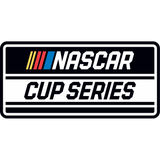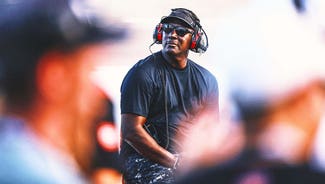
How will NASCAR's new rules for 2015 really affect teams?

Last Tuesday, NASCAR delivered the 2015 rules package to each of the NASCAR Sprint Cup Series teams focused primarily on cost-saving measures and creating better racing.
The main items on the list included a ban on all testing outside of officially sanctioned NASCAR and Goodyear tests, changes to the knockout qualifying format, rain tires for the Sprint Cup Series at road courses, as well as a reduction in horsepower through a tapered spacer, and less downforce on the cars.
This past weekend at Dover International Speedway, many in the NASCAR garage argued the biggest thing to come out of the rule changes is the reduction in horsepower.
For many crew chiefs, the majority of pressure will be placed on engine builders as they strive to get the most RPMs out of the motor while dealing with new valve lifters, a smaller radiator pan, a lower rear differential gear ratio and less horsepower with the tapered spacer.
The goal with reducing the horsepower and lessening the downforce is to slow the cars down enough to allow Goodyear to develop a softer tire that wears and creates better, side-by-side racing on the track.
"I think (downforce) is always a moving target as we learn more about these race cars," David Ragan told FOXSports.com. "As race teams, we're trying to get more downforce on the cars, because that equals more speed. That's always going to be a moving target. What was good 10 years ago is not going to be good today, and what's good tomorrow is not going to be good five years down the road. In my opinion, NASCAR needs to keep moving that around.
"I am 100 percent with Carl (Edwards) -- I know he's been very outspoken, and so have a few of the other drivers, that the less downforce we can have, the most horsepower we can have, and the softest tire we can have will produce the best racing," he said. "Any racetrack I've driven over the years, any race car I've driven over the years, the tracks that wore the tires out, that had a lot of fall off, that had less downforce, was the best racing."
Joe Gibbs Racing crew chief Darian Grubb indicated he would have liked to see more downforce removed, but thought NASCAR made a good call on all other counts.
"All the things are good, and it's a move in the right direction," said Grubb. "It's going to put a lot of things back in the driver's hands. The car won't be as important -- it's always important -- but this will give the drivers more capability to slide the car around and make mistakes and have the opportunity for more passing. I hope they continue going forward in that direction moving on.
"I think it's still going to be good racing," he said. "If the rule's 725, we're going to try and get 750 out of it. That's the way the sport works; everybody tries to get everything they can."
However, not everyone is convinced the move to reduce horsepower is one in the right direction.
"I'm not sure if I'm happy about taking away horsepower," said driver AJ Allmendinger. "I think that remains to be seen if it will make the racing better. But I think anything we can do just to soften the tires up a little bit, and take downforce away so the cars move around a little bit more. You are out of the throttle more. I think the thing I wonder about with the horsepower down is will it make us be out of the throttle anymore, or will it be like a Nationwide car to where you almost wide open around the rest. I think that is my question."
For crew chiefs and engine builders, the reduction in horsepower, lower rear gear and move to roller valve lifters are going to produce a lot of off-season work and stress inside the engine departments.
"Working with 9,000 RPM is going to be tough on the motor guys because now they've got to figure out how to get peak power in that range, where before we were at 9,500-9,600 RPM," Stewart-Haas Racing crew chief Tony Gibson told FOXSports.com. "It's going to be a bigger headache for the motor guys to figure out than it will for us."
Furniture Row Racing crew chief Todd Berrier agreed with his fellow crew chief, saying NASCAR went further than most expected on the motor side of things, while the difference in downforce is essentially reverting back to the 2013 standards with some changes to the body.
"I think for sure the motor and the gear is huge," said Berrier. "With them backing as much as they are, changing that as much as they are, that's a big thing we haven't done or move the needle toward that much in a long time.
"I feel like engines are going to be 50 horsepower or so more than Nationwide (Series cars), downforce is going to be potentially less, so it's going to be pretty weird," he said. "From the motor side, it's going to be really big lugging the things as much as we are. It's going to put the guys in the shop really to work to try and make up for that as much as we can."
Talking with at least one engine builder this weekend at Dover, he indicated new roller valves are going to cause a slippery slope of new parts and pieces needed inside the motor. By changing one part of the engine to meet the new rules standards, teams will have to change and strengthen the surrounding and connecting parts and pieces, as well.
Despite the changes, Grubb was quick to point out everyone is in the same boat and will adapt to whatever NASCAR directs the competition to do.
"They could put a five horsepower Briggs and Stratton motor in there and we're going to run it as hard as we can," he said. "It's all about the performance you get out of what you have. The guys will do a great job, I'm sure. There will be some development work with cam timing and all the things that go along with the reduced throttle body/tapered spacer size, because it's just limiting the airflow. We don't struggle in superspeedway racing and (the engines) are much more restricted than that."
With the ban on testing, teams will have to rely on alternative elements such as simulations, seven-post shaker rigs and wind-tunnel testing to help hone this new package as opposed to fine-tuning them on track at a test session.
"We'll have to go off our simulation stuff, because our aero maps are focused in on that, too, and that's a big part of our simulation program is our aero," Gibson, crew chief for Danica Patrick, said. "Obviously, going to the wind tunnel, spending more time in the wind tunnel and beating that to death is what we're going to have to do."
For some, they are utilizing the year's remaining team tests to work on the 2015 rules package before the ban on testing goes into effect.
"We have a couple company tests coming up here and we're going to try and use those rules packages that second day to try and work on it some this year if we can to get a head start on it," Gibson said. "We'll probably end up going to Nashville and New Smyrna as quick as we can before the end of the year so we can get a head start on it. I'm sure everybody else is doing the same thing."
"We have a couple tests left over and we're already contemplating testing the Monday after Phoenix, the Monday after Texas, right after the race to test next year's rule package," said Berrier. "That is if the engine shops can get enough stuff pieced together and we can find the ring and pinions we need to get the gear ratios right for that. For sure, people are going to put as much of (the 2015 package) in as they can.
"I think when it's all said and done, simulation has gotten so good in here that at the end of the day not a whole lot is going to change. We're all going to want to test, but if we can't test, we won't. When you go test, you're really nickel-and-diming it. Most of the race is done at the shop, most of the setup is done at the shop. When you get to the track, you're really, really close."
The ban on testing, much like the engine changes, is also aimed at saving teams money over the long run. The argument goes, however, that the top teams in the sport will simply allocate the money saved from the ban on testing into another area of development and innovation. Race Team Alliance chairman Rob Kauffman denied this in an exclusive interview with FOXSports.com's Tom Jensen.
However, Kauffman's view is not the norm throughout the NASCAR garage.
For Ragan, who drives for Front Row Motorsports, a smaller two-car operation, the ban on testing is not really saving the smaller teams money, because they were not spending the money on testing in the first place.
"To be as honest as I can, I don't know that it's going to make a big difference," he said of the testing ban. "The top teams are still going to have an advantage. It will help cost minimal on the small teams because we didn't test anyway. It didn't really matter. The larger teams, it may save them a little on personnel, but they're going to spend that money elsewhere. They're going to be in the wind tunnel more, they're going to develop software programs to run on their shaker rigs, and seven-posts, and simulation. The top teams are still going to have the advantage no matter what the rules are.
"I think it's good for everyone, just keeping them at home more with their families. That's probably good for a lot of the families in the sport."
As for the money NASCAR hopes to save teams and Kauffman's point that reallocating money elsewhere in the team won't happen? Well, Berrier disagrees.
"No testing? It's going to save us a lot of money to make up for all we're going to spend on the motors to make up for the rule change," he said.

